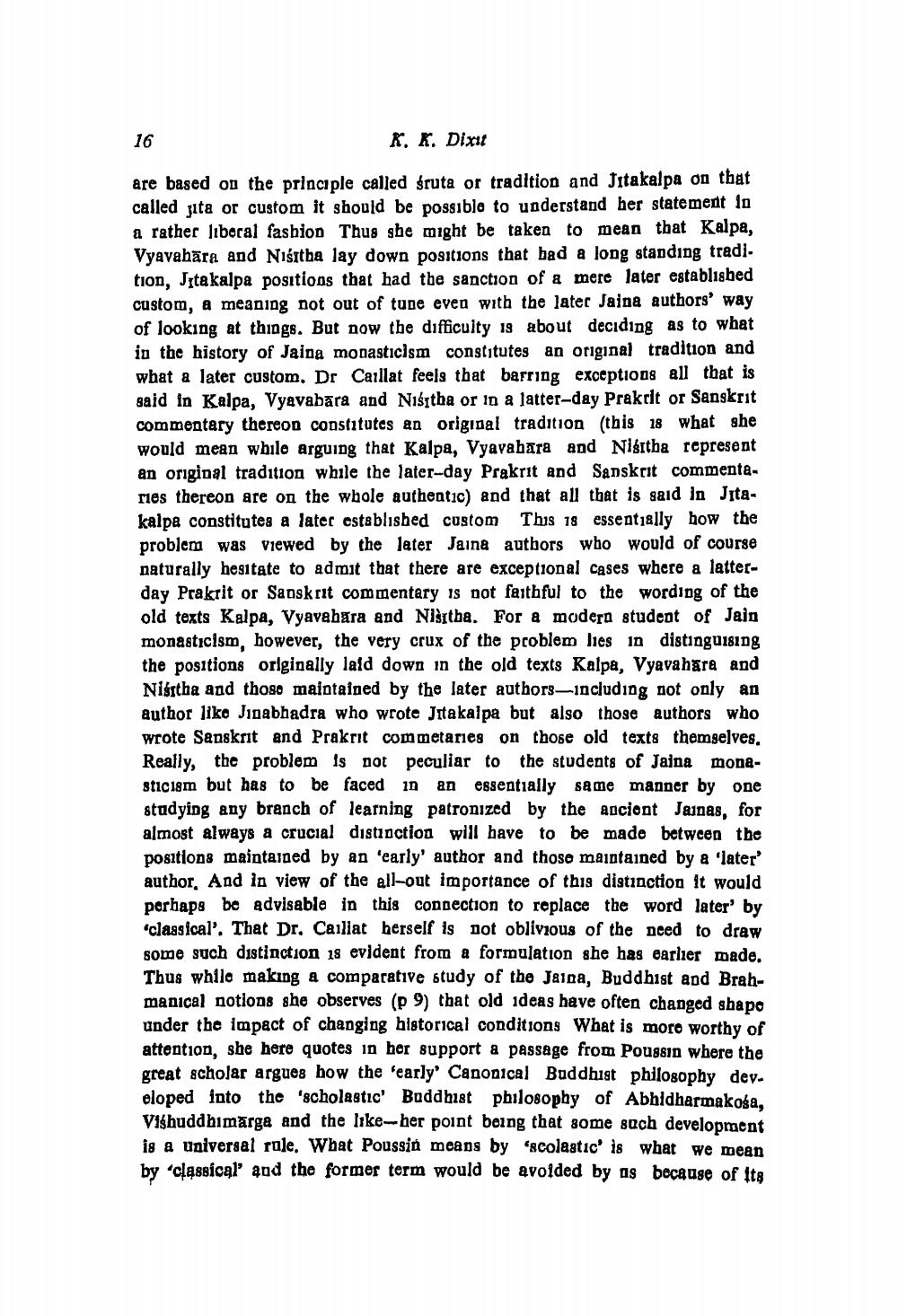________________
K. K. Dixit
are based on the principle called śruta or tradition and Jitakalpa on that called ita or custom it should be possible to understand her statement in a rather liberal fashion Thus she might be taken to mean that Kalpa, Vyavahara and Niśitha lay down positions that had a long standing tradition, Jitakalpa positions that had the sanction of a mere later established custom, a meaning not out of tune even with the later Jaina authors' way of looking at things. But now the difficulty is about deciding as to what in the history of Jaina monasticism constitutes an original tradition and what a later custom. Dr Caillat feels that barring exceptions all that is said in Kalpa, Vyavabara and Niśitha or in a latter-day Prakrit or Sanskrit commentary thereon constitutes an original tradition (this 18 what she would mean while arguing that Kalpa, Vyavahara and Nikitha represent an original tradition while the later-day Prakrit and Sanskrit commentaries thereon are on the whole authentic) and that all that is said in Jitakalpa constitutes a later established custom This 18 essentially how the problem was viewed by the later Jaina authors who would of course naturally hesitate to admit that there are exceptional cases where a latterday Prakrit or Sanskrit commentary is not faithful to the wording of the old texts Kalpa, Vyavahara and Nikitha. For a modern student of Jain monasticism, however, the very crux of the problem lies in distinguising the positions originally laid down in the old texts Kalpa, Vyavahara and Nistha and those maintained by the later authors-including not only an author like Jinabhadra who wrote Jitakalpa but also those authors who wrote Sanskrit and Prakrit commetaries on those old texts themselves. Really, the problem is not peculiar to the students of Jaina monasticism but has to be faced in an essentially same manner by one studying any branch of learning patronized by the ancient Jainas, for almost always a crucial distinction will have to be made between the positions maintained by an 'early' author and those maintained by a 'later' author, And in view of the all-out importance of this distinction it would perhaps be advisable in this connection to replace the word later' by 'classical'. That Dr. Caillat herself is not oblivious of the need to draw some such distinction 18 evident from a formulation she has earlier made. Thus while making a comparative study of the Jaina, Buddhist and Brahmanical notions she observes (p 9) that old ideas have often changed shape under the impact of changing historical conditions What is more worthy of attention, she here quotes in her support a passage from Poussin where the great scholar argues how the 'early' Canonical Buddhist philosophy developed into the 'scholastic' Buddhist philosophy of Abhidharmakosa, Vishuddhimarga and the like-her point being that some such development is a universal rule. What Poussin means by scolastic' is what we mean by 'classical' and the former term would be avoided by as because of its
16




